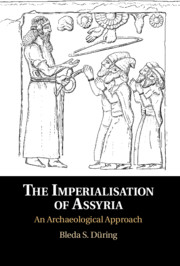Book contents
- The Imperialisation of Assyria
- The Imperialisation of Assyria
- Copyright page
- Dedication
- Contents
- Figures
- Tables
- Acknowledgements
- A Note on Chronology
- Introduction
- One A Fragmented World
- Two A City at the Fringe?
- Three The Rise of Assyria
- Four A Patchwork Empire
- Five Practising Empire
- Six Rulers of All the World
- Conclusions
- Bibliography
- Index
Three - The Rise of Assyria
Published online by Cambridge University Press: 24 January 2020
- The Imperialisation of Assyria
- The Imperialisation of Assyria
- Copyright page
- Dedication
- Contents
- Figures
- Tables
- Acknowledgements
- A Note on Chronology
- Introduction
- One A Fragmented World
- Two A City at the Fringe?
- Three The Rise of Assyria
- Four A Patchwork Empire
- Five Practising Empire
- Six Rulers of All the World
- Conclusions
- Bibliography
- Index
Summary
In the period between 1500 and 1200 BCE Assyria successfully transformed from a relatively insignificant small city state, that had long lost its central role in long-distance trade networks, into one of the great powers of the Amarna Age in the Ancient Near East. This transformation is the theme of this chapter. It will be argued that the rise of Assyria is best understood as a combination of a highly particular set of historical developments and the successful deployment of Assyrian cultural repertoires, and that the outcome of this process (Assyria as one of the great powers) was not foreseeable until relatively late in the process.
- Type
- Chapter
- Information
- The Imperialisation of AssyriaAn Archaeological Approach, pp. 41 - 60Publisher: Cambridge University PressPrint publication year: 2020

